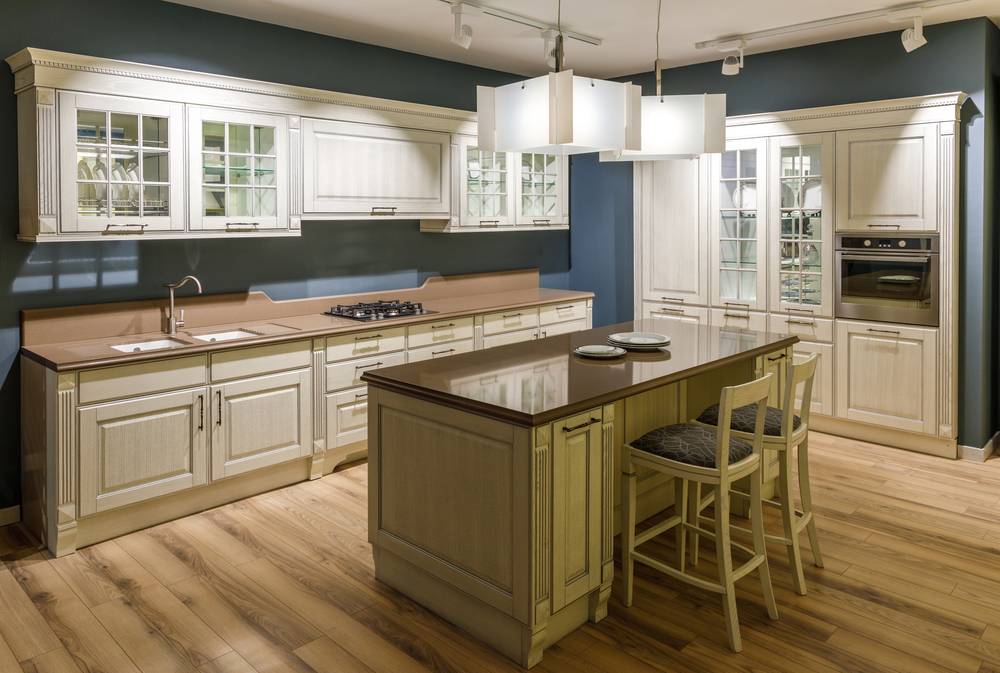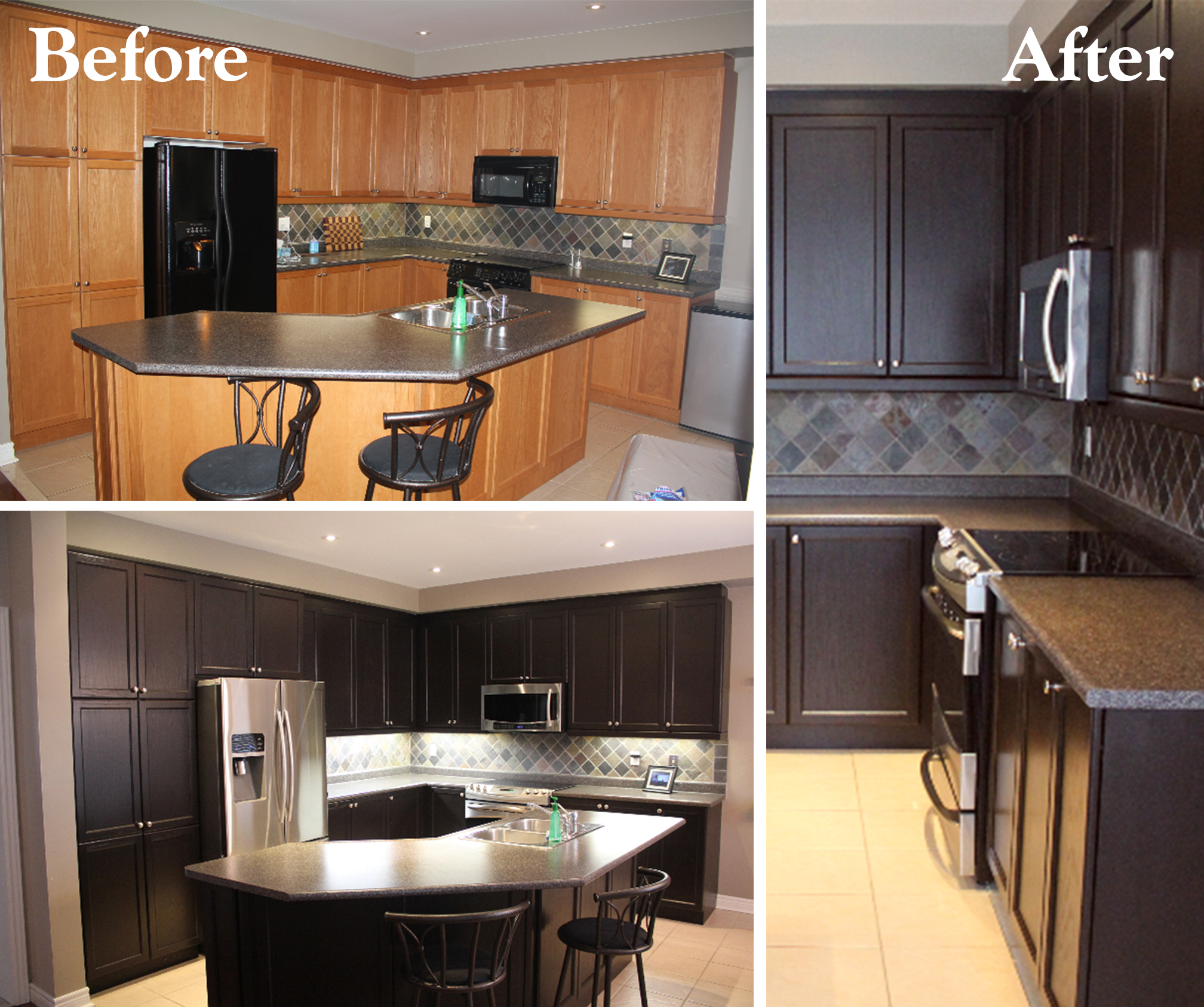Understanding Kitchen Cabinet Staining Contractors

Kitchen cabinet staining contractors play a crucial role in home renovations, transforming the look and feel of kitchens by enhancing the natural beauty of wood cabinets. They possess specialized skills and knowledge to achieve desired finishes, adding value and elegance to any kitchen.
Types of Staining Techniques
Professional kitchen cabinet staining contractors employ various techniques to achieve different aesthetic outcomes. These techniques vary in complexity and application, each tailored to specific wood types and desired effects.
- Water-based stains: These stains are environmentally friendly, quick-drying, and easy to apply, making them suitable for beginners. They offer a translucent finish that allows the wood grain to show through.
- Oil-based stains: Oil-based stains penetrate deeper into the wood, resulting in richer, darker colors and a more durable finish. They are known for their long drying time and strong odor.
- Gel stains: Gel stains are thicker than water-based or oil-based stains, making them ideal for achieving a more even and consistent finish, particularly on porous woods. They also minimize bleeding and provide a durable, long-lasting finish.
- N-C stains: Nitrocellulose stains are known for their fast drying time and vibrant colors. They are typically used for furniture and other smaller projects due to their potential for cracking on larger surfaces.
Materials and Tools
Kitchen cabinet staining contractors use a variety of materials and tools to ensure a professional and high-quality finish. These tools are essential for preparing the cabinets, applying the stain, and achieving the desired results.
- Sandpaper: Sandpaper is used to smooth the cabinet surfaces and remove any imperfections before staining. Different grit levels are used for various stages of sanding, ranging from coarse to fine.
- Brushes: Brushes are used to apply the stain evenly to the cabinet surfaces. Natural bristle brushes are preferred for oil-based stains, while synthetic bristle brushes are suitable for water-based stains.
- Rags: Rags are used to wipe off excess stain and create a smooth, even finish.
- Gloves: Gloves protect the contractor’s hands from the stain and prevent staining of the skin.
- Masks and respirators: Masks and respirators are essential for protecting the contractor from the fumes of stains, especially oil-based stains, which can be harmful to the respiratory system.
- Polyurethane: Polyurethane is a protective sealant that is applied over the stained cabinets to provide a durable and long-lasting finish. It also helps to enhance the color and protect the wood from scratches and moisture.
Finding and Choosing the Right Contractor: Kitchen Cabinet Staining Contractors

Finding the right kitchen cabinet staining contractor is crucial for achieving your desired results and ensuring a smooth renovation process. It involves more than just finding someone who can apply stain; it requires careful consideration of their skills, experience, and professionalism.
Evaluating Contractor Qualifications and Experience
It’s essential to assess the contractor’s qualifications and experience to ensure they are equipped to handle your project.
- Check their portfolio: Request to see examples of their previous work, particularly projects similar to your kitchen cabinet staining needs. This will give you a visual understanding of their capabilities and style.
- Inquire about their experience: Ask about their years of experience in cabinet staining and their familiarity with different types of stains, finishes, and wood types. Experienced contractors have a deeper understanding of the nuances of staining and can provide expert advice.
- Verify their certifications and licenses: Inquire about any relevant certifications or licenses they hold. This demonstrates their commitment to professional standards and can provide you with additional assurance of their competence.
Key Factors to Consider When Choosing a Contractor
Several factors contribute to choosing the right contractor, ensuring a successful and satisfying experience.
- Pricing: Obtain detailed quotes from multiple contractors. Compare their pricing structures, including labor costs, materials, and any additional fees. Be sure to ask about warranties or guarantees for their work.
- Communication: Effective communication is essential throughout the project. Choose a contractor who is responsive, clear, and proactive in their communication. They should be readily available to answer your questions, address concerns, and keep you informed of project progress.
- Customer Reviews: Read online reviews and testimonials from previous clients to gain insights into the contractor’s work quality, reliability, and customer service. Positive reviews and a consistent track record of satisfied customers can be a good indicator of their professionalism and dedication.
The Staining Process and Considerations

The staining process is a meticulous transformation that enhances the beauty and durability of your kitchen cabinets. It involves a series of steps, each requiring careful attention to detail. Understanding these steps and the factors that influence the outcome will help you achieve the desired look and ensure long-lasting results.
Color Selection, Kitchen cabinet staining contractors
Choosing the right stain color is a crucial step in the process. It sets the tone for the entire kitchen and should complement the existing décor. There are numerous factors to consider when selecting a stain color, including the existing color scheme, the desired mood, and the type of wood.
- Light Stains: Enhance the natural grain of the wood, creating a warm and inviting atmosphere. They are a popular choice for kitchens with a minimalist or contemporary design.
- Medium Stains: Offer a balance between light and dark tones, providing a versatile option for various kitchen styles. They can create a traditional or transitional look.
- Dark Stains: Add depth and drama to the cabinets, creating a sophisticated and elegant ambiance. They are often used in kitchens with a traditional or modern design.
Wood Preparation
Proper wood preparation is essential for achieving a smooth, even stain application. This involves several steps:
- Cleaning: Removing dirt, grease, and any previous finishes is critical for optimal stain adhesion. Use a mild detergent and a soft cloth to clean the cabinet surfaces thoroughly.
- Sanding: Sanding the cabinets smooths out imperfections and creates a uniform surface for the stain to adhere to. Use progressively finer grit sandpaper, starting with 80 grit and finishing with 220 grit.
- Dust Removal: After sanding, thoroughly remove all dust particles with a tack cloth or a vacuum cleaner. Any remaining dust can interfere with the stain application and create an uneven finish.
Types of Stains
There are various types of stains available, each with unique characteristics and suitability for different cabinet materials.
- Oil-Based Stains: These stains penetrate deeply into the wood, enhancing its natural grain and providing a rich, even color. They are known for their durability and resistance to fading.
- Water-Based Stains: Water-based stains are easier to clean up and dry faster than oil-based stains. They are less likely to raise the wood grain and are suitable for various wood types.
- Gel Stains: Gel stains are thicker than traditional stains, making them ideal for vertical surfaces. They are less likely to run and provide a more even finish.
Finishing Techniques
After applying the stain, it’s essential to apply a finish to protect the wood and enhance its durability.
- Polyurethane: Polyurethane is a durable finish that protects the wood from scratches, water damage, and UV rays. It is available in both oil-based and water-based formulations.
- Lacquer: Lacquer is a hard, durable finish that provides a high-gloss sheen. It is often used for cabinets that require a high level of protection.
- Wax: Wax is a natural finish that provides a soft sheen and enhances the wood’s natural beauty. It is less durable than polyurethane or lacquer but is a good option for cabinets that are not exposed to heavy wear and tear.
Kitchen cabinet staining contractors often work with a variety of styles, from traditional to contemporary. A popular trend is the inclusion of a dedicated wine and coffee bar cabinet within the kitchen design. These cabinets, often with glass doors or open shelving, provide a stylish and functional space for showcasing and storing wine and coffee accessories, enhancing the overall aesthetic and functionality of the kitchen.
Kitchen cabinet staining contractors can transform the look of your kitchen, offering a wide range of colors and finishes to suit your style. A popular choice for a modern and sophisticated aesthetic is elephant gray kitchen cabinets , which provide a timeless backdrop for various countertop and accent colors.
Contractors can expertly apply stains to achieve a desired depth and richness, enhancing the natural grain of the wood and creating a truly unique finish.